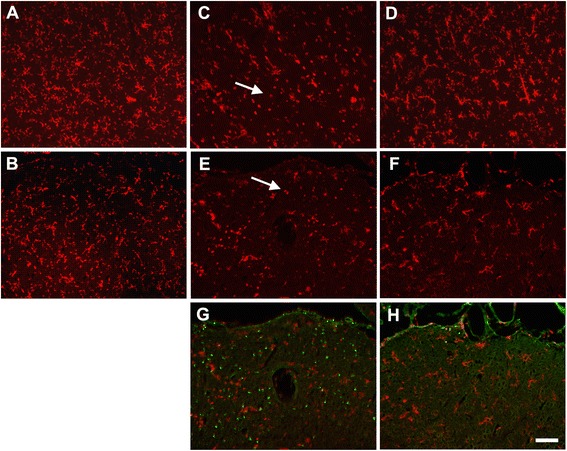Figure 1.

Neuregulin-1 inhibits DFP-induced changes in microglial morphology in the cortex and thalamus. Anesthetized rats were pretreated with PB (0.1 mg/kg, i.m.) and AMN (20 mg/kg, i.m.) 30 and 10 min, respectively, prior to i.p. injection of DFP (9 mg/kg). NRG-1 or vehicle was administered via injection into the carotid artery 5 min prior to DFP exposure. Control animals received PB, AMN, and water in place of DFP. The CD11b antibody was used to identify resting and activated microglia in superficial layers of cortex (A, C, D) and in the lateral dorsal thalamus (B, E, F, G, H) 24 h following DFP administration. CD11b immunopositive cells (red labeling) in the cortex (A) and thalamus (B) of control animals displayed the characteristic ramified morphology of resting microglia. In contrast, CD11b immunopositive cells in these same brain regions of DFP-intoxicated animals exhibited morphology characteristic of activated microglia (indicated by arrows), for example, increased size of the cell body, thickened proximal processes, and decreased ramification of distal branches (C, E, G). CD11b immunopositive cells in DFP intoxicated animals treated with NRG-1 (D, F, H) exhibited morphologies that more closely resembled those observed in controls. Dual labeling with CD11b and FJB (green labeling) showed that in the thalamus, activated microglia were present in areas with significant neurodegeneration following DFP (G), but neither activated microglia nor injured neurons were present in the thalamus of DFP intoxicated animals pretreated with NRG-1 (H). Scale bar = 50 μm.
